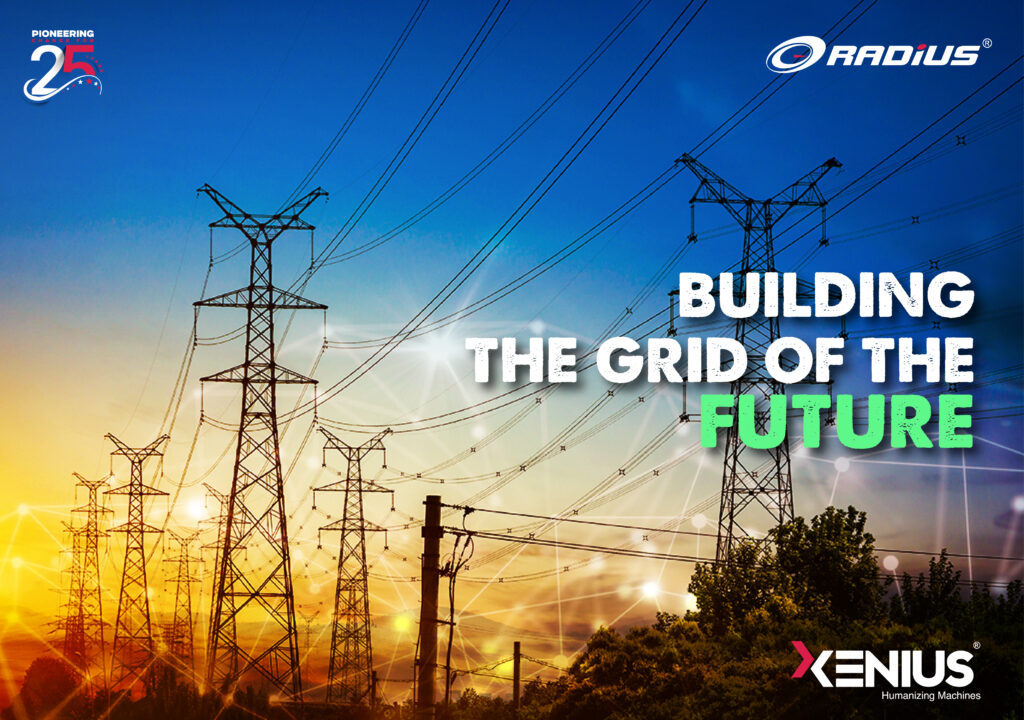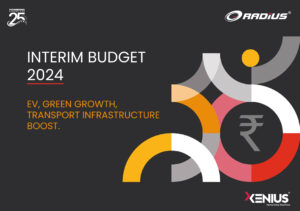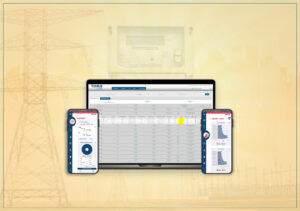Rapid industrialization and electrification of the economy has been building pressure on India’s power transmission systems for a while now. The country not only has to maximize generation of power from various sources (alternative energy deserves special focus here) : There is also a dire need to upgrade.
India’s power sector has witnessed steady technological transformation over the decades. That said, asset obsolescence, under-optimized distribution and transmission, and pilferage and power theft are gnawing away at the foundations of the nation’s traditional grid framework. The upshot is significant amounts of AT & C (Aggregate Technical & Commercial) losses, amongst others.
This makes digitization of India’s ‘dated’ power grids not just a nice-to-have, but a must-have. A digitized power network is one that helps get closer to carbon neutrality and sustainability, essential in a time when climate change is a rising concern. That, however, is far from the only reason why the makeover and transition needs to happen (and fast).
For one, an ‘updated’ power distribution mechanism can support the enhanced global interest in automation and sustainable transport such as Electric Vehicles.
Secondly, digitized grids are imperative for the integration of renewable energy sources (such as hydro, wind and solar) and to address new loads like energy storage and charging of electric vehicles. This must be done without adversely disrupting efficiency.
In this context, it is pertinent to note that the intermittent, variable and fluctuating nature of renewable (‘green’) energy sources can negatively impact grid stability. The challenge can only be addressed by a more superior grid.
Finally, India’s ambitious programs such as ‘Smart Cities’ and ‘Make In India’ need an advanced energy management framework that can accommodate an increasing use of green and renewable energy resources while delivering reliable, efficient and uninterrupted supply of power. Long story short, the need to shift to a smarter system has never been higher.
Digitization of power grids offers invaluable insights into asset performance and system operations, which snowballs into a slew of revolutionary features and transformational benefits.
The problem? Modernization and investments in grid digitization still lags way behind targets. At the rate we are going, the planet will be falling well short of the target it has set for itself : Clean electricity generation by 2050.
SMART GRIDS : PLUGGING THE GAP
Smart grids are electrical grids possessing IT, communication and automation systems that can monitor the flow of power from the point of generation to the point of consumption – while reflexively adjusting to flux. They enable utilities to reap a glut of benefits such as operational efficiency, reliability and safety.
Along with everything traditional grids do, smart grids employ emerging technologies to facilitate ‘interaction’ between supply side and consumption side, thereby doubling up as a ‘demand response’ mechanism. This makes smart grids alert and responsive to changes on either side. This also helps them match supply with demand with less friction, adjust to unexpected anomalies in agile-mode, stay resilient during disruption, identify leaks and losses, and empower appropriate technical and managerial decisions.
How exactly do they do that? Well, the bi-directional ‘conversation’ between the provider and the user in a smart grid is made possible by AMI, or Advanced / Automated Metering Infrastructure. AMI encompasses a mechanism that records, aggregates and analyses electricity behaviour at the user’s end, and passes this information (which comprises key data such as peak demand, consumption patterns and cost of consumption) to utilities and DISCOMs.
Thanks to greater control at every step along the power distribution arc, smart grids carry the potential to catalyse social and economic development by ensuring that every nook and cranny of the nation receives electricity : Be it factories, businesses or homes. Indeed, smart grids have the power, pun intended, to transform the Indian energy sector into a secure, adaptive, sustainable and digitally enabled ecosystem – which is also the crux of India’s National Smart Grid Mission (NSGM). State actors instituted to aid in bringing that mission to life are the India Smart Grid Task Force (ISGTF), an inter-ministerial forum, and the India Smart Grid Forum (ISGF), a public−private partnership – both born circa 2010.
It is not feasible to overhaul the entire infrastructure of a nation as large as India overnight. However, with appropriate policies, behavioural change triggers and crossover technologies, it is possible to make the transition more practical and swift. And this is where smart meters come in.
SMART METERS: GATEWAY TO THE SMART GRID EXPERIENCE
Smart electricity meters can be defined as the foundational elements of a Smart Grid. These devices are the most important element or link in the smart grid system, acting as both gatekeepers and gateway to the next chapter and dimension, as it were.
Smart meters obtain information from the end user’s load devices and inform the utility company about energy usage in real time. A smart metering ecosystem typically comprises of smart meters, sensors, control devices and dedicated communication architecture. These machines possess the ability to better decode and understand the complexity inherent in modern, distributed energy matrices.
By allowing Distribution System Operators (DSOs) monitor and supervise energy in real-time, smart meters act as enablers of effective electricity management while amplifying grid performance and reliability.. Smart meters also carry the advantage of being interoperable with third-party vendor solutions for seamless compatibility and backward integration and with existing installations.
At the consumer end, smart meters usher in watershed levels of convenience, control and confidence. Acting as accurate and accessible sources of information, their granular and personalized data on energy consumption helps businesses, families and landlord-tenants plan their electricity activities (and spends) better – while encouraging adoption with breezy app-like use, easy payment options and green features.
A SMART IDEA WHOSE TIME HAS COME.
Smart meters, when fortified with advanced web-based monitoring systems, hold the key to transforming India’s energy grid. Easy to see why the space is witnessing an explosion of strategic initiatives, investment plans and key developments – and is on a trajectory of remarkable growth. The India Smart Meter Market, valued at USD 223.4 million, is projected to surge to a market size of USD 3,267.7 million by 2031. This substantial growth is expected to occur at a remarkable Compound Annual Growth Rate (CAGR) of 34.57 percent during the forecast period from 2023 to 2031.
These strategic initiatives have been complemented by substantial financial incentives to promote power sector reforms. In June, the Ministry of Power unveiled a substantial incentive of Rs 664 billion, with an even greater commitment of Rs 1.4 trillion in the fiscal year 2023-2024. The country has an ambitious vision of installing 250 million smart meters by 2026 under the Revamped Distribution Sector Scheme (RDSS) to bring down AT&C losses to 12-15% and nullify the gap between Average Cost of Supply and Average Revenue Realized.
XENIUS BY RADIUS SYNERGIES: VISUALIZING INDIA’S NEXT SMART GRID WITH A NEW LEAGUE OF SMART PREPAID METERS.
At Radius Synergies International Pvt Ltd, we pioneer next-in-class M2M and IoT technology driven solutions for transforming traditional power networks into future-ready smart grids.
Designed for all weather conditions, our reliable and rugged devices are made to industrial grade benchmarks and conform to all statutory compliances. Our Smart Metering Platform has been approved by CPRI under the AMISP program of REC. Backed by decades of domain expertise, passion & relentless zeal towards exceeding stakeholder satisfaction, smart prepaid metering by Radius Synergies (build on proprietary state-of-the-smart platform Xenius) provide advanced performance via seamless integration with legacy processes, affording a scalable and quick pathway for grid automation with minimal fuss.
Here are some of standout feature-benefits of Xenius powered smart prepaid metering systems :
- ‘Meter in your pocket’ concept : Get real time energy consumption (kWh) and balance (Rs.) amount status via User-friendly mobile apps.
- Real time and accurate energy parameters (kWh, kVAh, PF, voltage, current) capture and reporting.
- Tariff and peak load management and energy auditing for ease of day-to-day operations.
- Quantifiable data analysis for dispute management.
- Real time alerts for energy source switch (utility to DG and vice versa).
- Personalized demand management to optimize consumption through alerts.
- Detailed MIS reports (Utility, Grid, CAM etc.) with 24X7 backend support.
- Transparency in tariff slabs, consumption & billing.
- Safe and secure online payments and recharge.
DATA SOURCE ATTRIBUTION
- https://www.reuters.com/business/energy/indias-grid-strained-by-burgeoning-power-demand-kemp-2023-03-29/
- https://www.linkedin.com/posts/radiussynergiesinternational_radiussmartgrid-energyrevolution-sustainablefuture-activity-7082002621883924480-XOIS/
- https://www.electricalindia.in/role-of-smart-meters-in-smart-grid/
- https://www.climatescorecard.org/2023/01/indias-national-power-grid/#:~:text=Individual%20State%20grids%20were%20interconnected,each%20region%20of%20the%20country.
- https://www.gridspertise.com/search-news/news/2022/03/gold-partner-india-smart-utility-week-2022
- https://www.teriin.org/article/policy-and-technology-perspectives-india
DISCLAIMER
Observations and options expressed in the article (except where specifically validated by market numbers and stats) belong to the contributing writer of the article, and are not necessarily indicative of the company’s position and stance in the matter.












